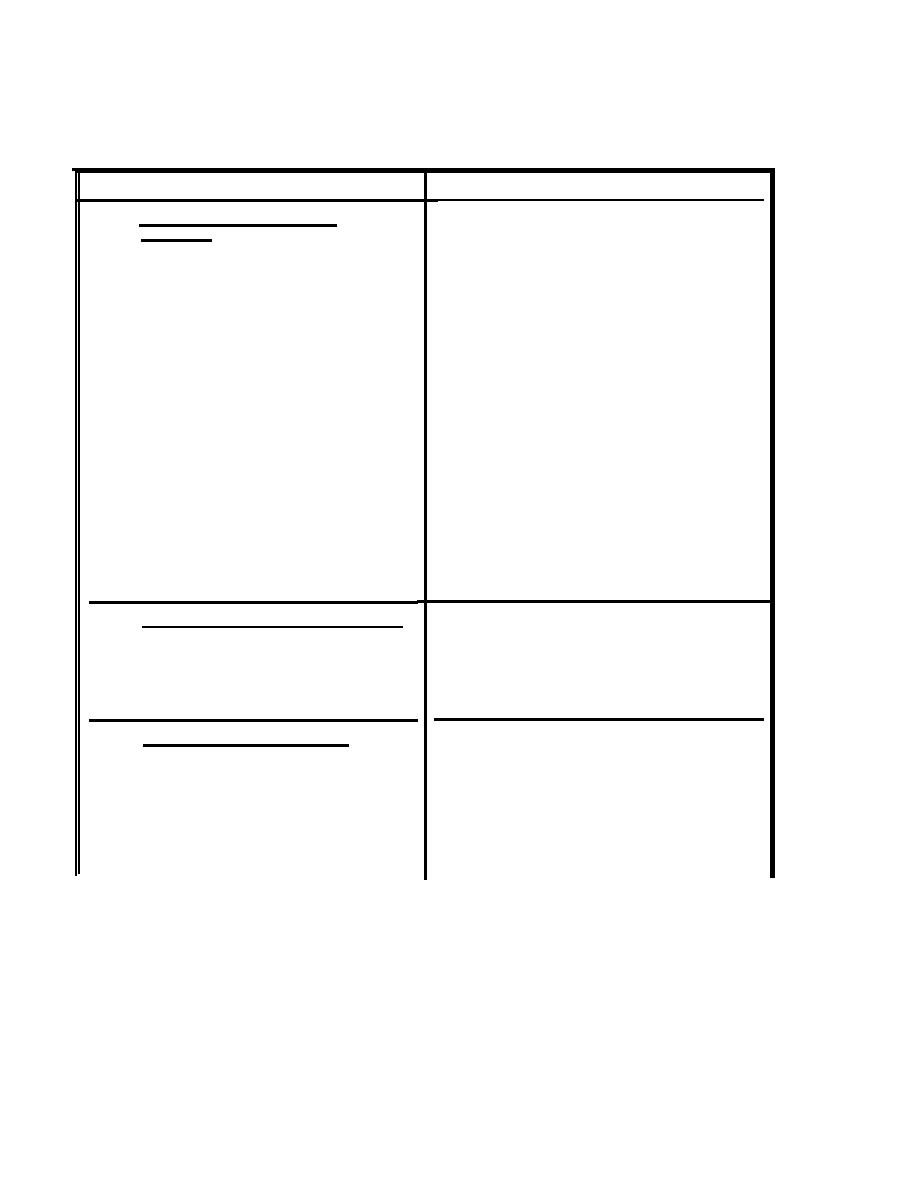

Custom Search
|
|

|
||
 TM 5-683/NAVFAC MO-116/AFJMAN 32-1083
Table 2-2. Trouble-shooting procedures for switchgear equipment - continued.
CAUSE
REMEDY
4.
R e l a y s Failing to Trip
Breakers
Adjust setting to correspond with
circuit conditions.
Improper setting.
C l e a n contacts with burnishing tool.
Do not use emery or sandpaper.
D i r t y , corroded or tarnished
contacts.
Readjust so that contacts close with
proper amount of wipe.
Contacts improperly adjusted.
Check with instruments to a s c e r t a i n
that voltage is applied and that
c u r r e n t is passing through relay.
O p e n circuits or short
circuits in relay connections.
T a r g e t and holding coils should
c o r r e s p o n d with tripping duty of
breaker to assure proper tripping.
Improper application of target
If timing device is of bellows or
and holding coil.
oil-film type, clean and adjust. If
of induction-disk type, check for
m e c h a n i c a l interference.
F a u l t y or improperly adjusted
t i m i n g devices.
5.
N o i s e s Due to Vibrating P a r t s
Tighten.
Loose bolts or nuts permitting
excessive vibration.
T i g h t e n any loose nuts or core
L o o s e laminations in cores of
clamps.
transformers. reactors, etc.
6.
C o n n e c t i o n s Overheating
I n c r e a s e the number or size of
I n c r e a s e of current due to
conductors.
R e m o v e excess current
a d d i t i o n a l load that is beyond
from circuit.
n o r m a l current rating of bars
or cables.
T i g h t e n all bolts and nuts. Too
B o l t s and nuts in the
much pressure must be avoided.
connection joints not tight.
2-18
|
 |
|
 |
||